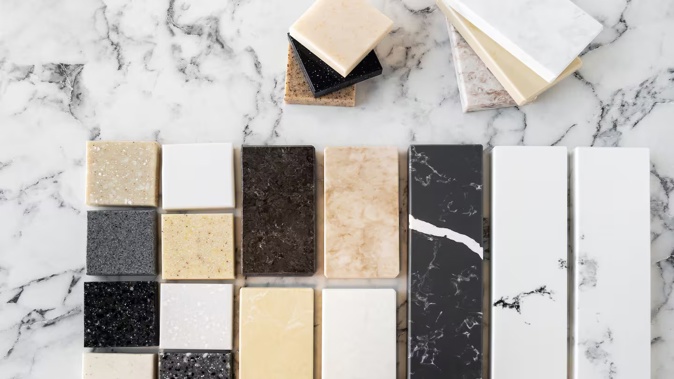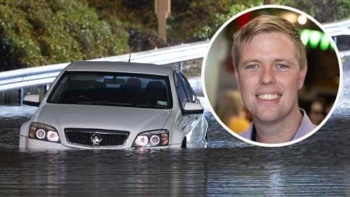
Another major health group has called on the Government to follow Australia’s lead and ban the popular benchtop material engineered stone, over links to the incurable lung disease silicosis.
The Asthma and Respiratory Foundation NZ called for a ban on engineered stone, citing growing concern for the long-term health of workers who cut, polish and fit the artificial material.
That position comes on the heels of similar advocacy from the Royal Australasian College of Physicians (RACP) and the Thoracic Society of Australia and New Zealand.
Engineered or artificial stone will be banned outright in Australia in July, to protect stonemasons from exposure to respirable crystalline silica (silica dust).
Dust from engineered stone is considered more dangerous, because the man-made products have traditionally contained up to 95 per cent silica, compared to 2 to 50 per cent in natural stones.
Repeated, occupational inhalation of even very small amounts of dust has been linked to the lung disease silicosis and other serious conditions including cancer and heart disease.
There is no danger to homeowners once the material is installed. Engineered stone is the most popular benchtop material used in new kitchens and bathrooms in New Zealand.

Workplace Relations and Safety Minister Brooke van Velden will soon receive advice on regulating engineered stone. Photo / Mark Mitchell
Total engineered stone ban is unnecessary, industry argues
Fabricators here are transitioning to new products that contain less than 30 per cent silica. They argue this step will keep workers safe, when combined with properly enforced safety measures like ventilation systems, respirator use and only fabricating stone when it is wet, to suppress dust.
However, a total ban is wanted by the Asthma and Respiratory Foundation, which for 60 years has advocated for 700,000 New Zealanders with respiratory disease, as well as supporting research and clinical standards.
- RACP calling for 'outright ban' on dangerous benchtop material
- Calls for engineered stone ban with tradies' lives at risk
“There are multiple alternatives and, as trusted and independent leaders in the respiratory health sector, we do not want to see workers’ lung health deemed of lower importance than consumers’ aesthetic preferences,” the foundation said in a statement, released this morning.
“It can take up to 10 years after exposure for symptoms of silicosis to appear, meaning that people who work with silica-containing substances usually don’t realise that damage is being done to their lungs while they are working with it.
“Banning engineered stone will not eliminate silicosis but it will protect those involved in very high-risk work from further exposure.”
A number of tradies in Australia have died horrible, early deaths. Others are debilitated from symptoms including shortness of breath.
In New Zealand, the number of confirmed silicosis cases linked to dust from engineered stone is far smaller. Only about 200 people have been assessed through an official ACC-run pathway, with a handful of confirmed cases so far.
However, clinicians say the actual burden will only become apparent after radiological and clinical assessments, and a period of surveillance.
The College of Physicians estimates up to 1000 former and current workers could be at risk, and warns that, like with asbestos dust, the real toll will not be known for decades.
WorkSafe investigations have found widespread safety failures at workshops where imported slabs of stone are cut, polished and shaped, and an ongoing Herald investigation has found gaps in oversight of the industry.
The College of Physicians has written to Prime Minister Christopher Luxon, Workplace Relations and Safety Minister Brooke van Velden and other political parties, asking for a total ban on engineered stone, or much stricter controls on importers and fabricators.
It also wants an official registry of people who have been exposed to silica dust.
Officials here are preparing advice for van Velden on regulatory options for engineered stone, which is expected shortly.
Labour’s spokeswoman for workplace safety, Camilla Belich, has said the party wanted to see that advice before deciding its position on a ban.
Australia opted to ban even lower-silica engineered stone, after the government agency Safe Work Australia concluded, “there is no toxicological evidence of a ‘safe’ threshold of crystalline silica content”.
HELP US INVESTIGATE
If you can help us shed light on this issue, contact investigative reporter Nicholas Jones by email: [email protected]
We will not publish your name or identify you as a source unless you want us to.
Nicholas Jones is an investigative reporter at the Herald. He won the best individual investigation and best social issues reporter categories at the 2023 Voyager Media Awards.
Take your Radio, Podcasts and Music with you









